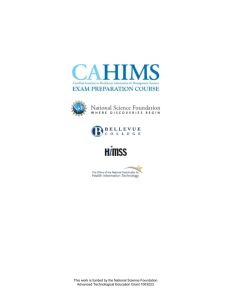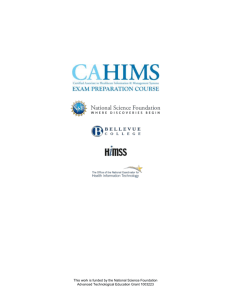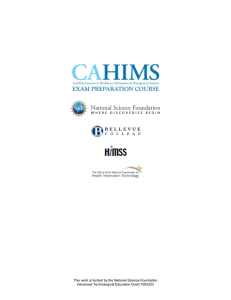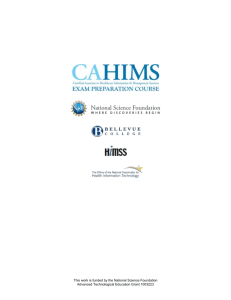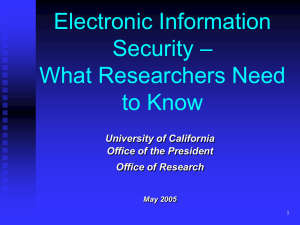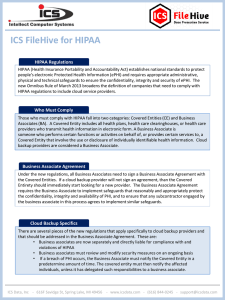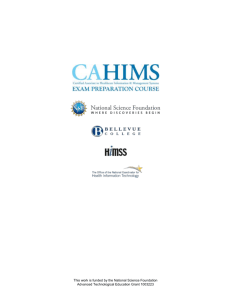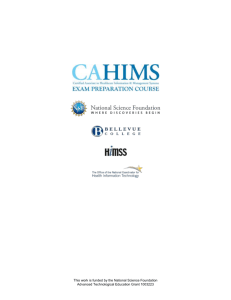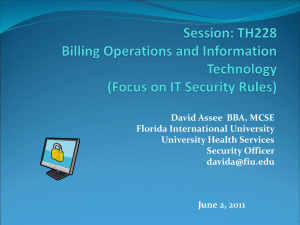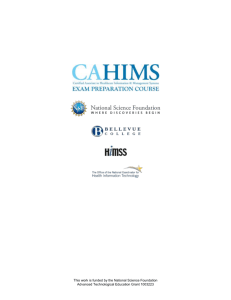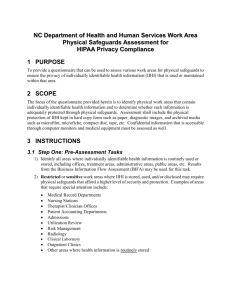7.3-Assessment-Key
advertisement
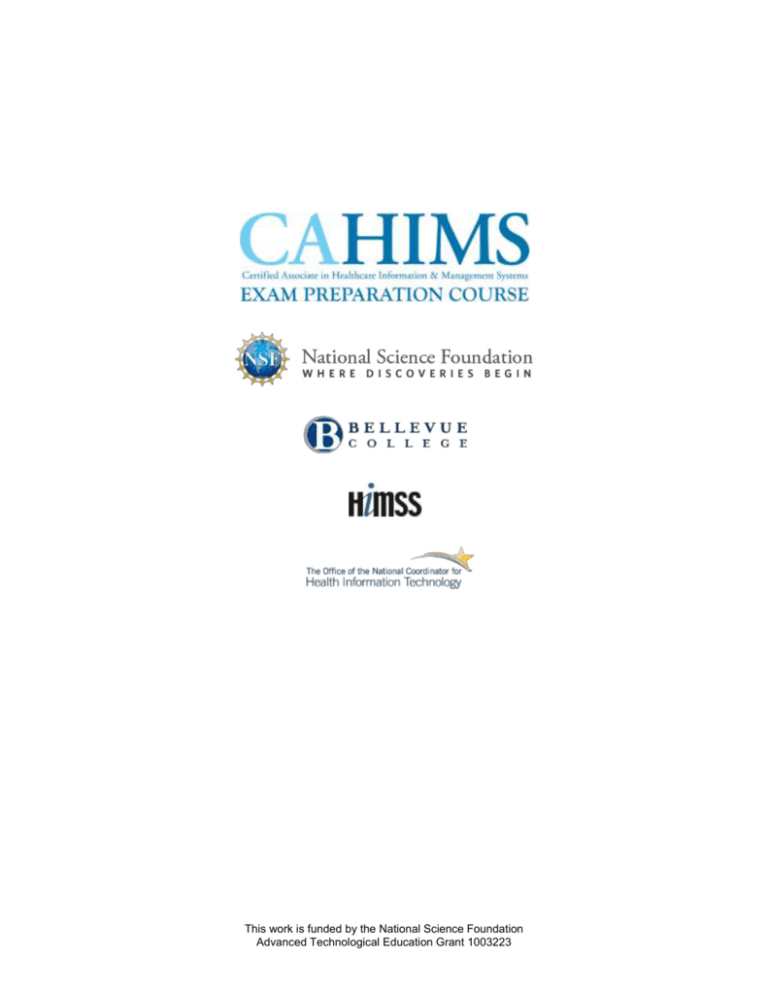
This work is funded by the National Science Foundation Advanced Technological Education Grant 1003223 The CAHIMS Exam Preparation Course and the CAHIMS exam are the result of collaboration between the Life Science Informatics Center at Bellevue College and the Healthcare Information and Management Systems Society (HIMSS). Significant content found in the CAHIMS Exam Preparation Course stems from the Office of the National Coordinator for Health Information Technology. Creation of the CAHIMS Exam Preparation Course and the CAHIMS exam was made possible through support from the National Science Foundation (NSF). Curriculum Team: Margaret Schulte, DBA Michèle Royer, PhD Nathan Savage, MLIS This work is funded by the National Science Foundation Advanced Technological Education Grant 1003223 Section 7 - Privacy and Security Lesson 7.3 - Data and Systems Security Management Assessment Questions Answer Key Lectures 1 & 2 1. Which of the following is an advantage of electronic health records compared to paper records? a. Electronic records can be transported over networks as long as encryption is not used during transport. b. With electronic records, it is not necessary to prepare for potential disasters, such as fires and natural catastrophes, which affect paper records. *c. Electronic records allow for fine-tuned control of access permissions, potentially putting patients in control of their health information. Answer: C. Electronic records allow for fine-tuned control of access permissions, potentially putting patients in control of their health information. Lecture/Slide: 1/3 2. Which of the following terms describes the practices a provider employs to protect patients’ privacy rights? a. privacy *b. confidentiality c. security d. integrity Answer: B. Confidentiality Lecture/Slide: 1/4 3. Which of the following terms refers to the specific safeguards or controls that are put in place to ensure the confidentiality of patient data? a. privacy b. confidentiality *c. security d. Integrity Answer: C. Security Lecture/Slide: 1/4 This work is funded by the National Science Foundation Advanced Technological Education Grant 1003223 Page 1 4. Which of the following security management system standards is specific to the health care sector? *a. HIPAA Security Rule b. ISO 27001 c. NIST 800-53 d. PCI DSS Answer: A. HIPAA Security Rule Lecture/Slide: 1/5 5. EPHI is a common acronym in health care, which stands for: a. employer protected health inquiry b. employer processed health information c. electronic processed health information *d. electronic protected health information Answer: D. Electronic protected health information Lecture/Slide: 1/6 6. Which of the following is NOT typically used to categorize types of security safeguards? a. administrative safeguards *b. complacent safeguards c. physical safeguards d. technical safeguards Answer: B. Complacent safeguards Lecture/Slide: 1/8 7. Which of the following is NOT part of the Security Management Process? a. risk analysis b. risk management *c. risk prevention d. system activity review Answer: C. Risk prevention Lecture/Slide: 1/9 This work is funded by the National Science Foundation Advanced Technological Education Grant 1003223 Page 2 8. Which of the following is an example of a workstation as defined in the HIPAA Security Rule? a. desktop computer b. laptop c. USB drive *d. all of the above Answer: D. All of the above Lecture/Slide: 2/3 9. Before sending unneeded computer equipment containing EPHI away for surplus or resale, you should: a. Delete files containing EPHI from the computer simply using the delete function of the operating system. b. Change the passwords of all users accessing the system, preventing access to all EPHI. *c. Remove the hard drives from the computer equipment for destruction, or perform a secure deletion of all data using special methods that ensures data on magnetic media is completely unreadable. d. Make sure that whoever acquires the computer equipment agrees not to hold you liable for any EPHI contained on the equipment. Answer: C. Remove the hard drives from the computer equipment for destruction, or perform a secure deletion of all data using special methods that ensures data on magnetic media is completely unreadable. Lecture/Slide: 2/4 10. Which of the following is an example of two-factor authentication? *a. requiring a user to provide a password along with a smart card to access an EHR b. a physician having access to more patient information in an EHR than an administrative user c. enforcing complexity requirements when changing a password d. biometric authentication Answer: A. Requiring a user to provide a password along with a smart card to access an EHR Lecture/Slide: 2/7 This work is funded by the National Science Foundation Advanced Technological Education Grant 1003223 Page 3
